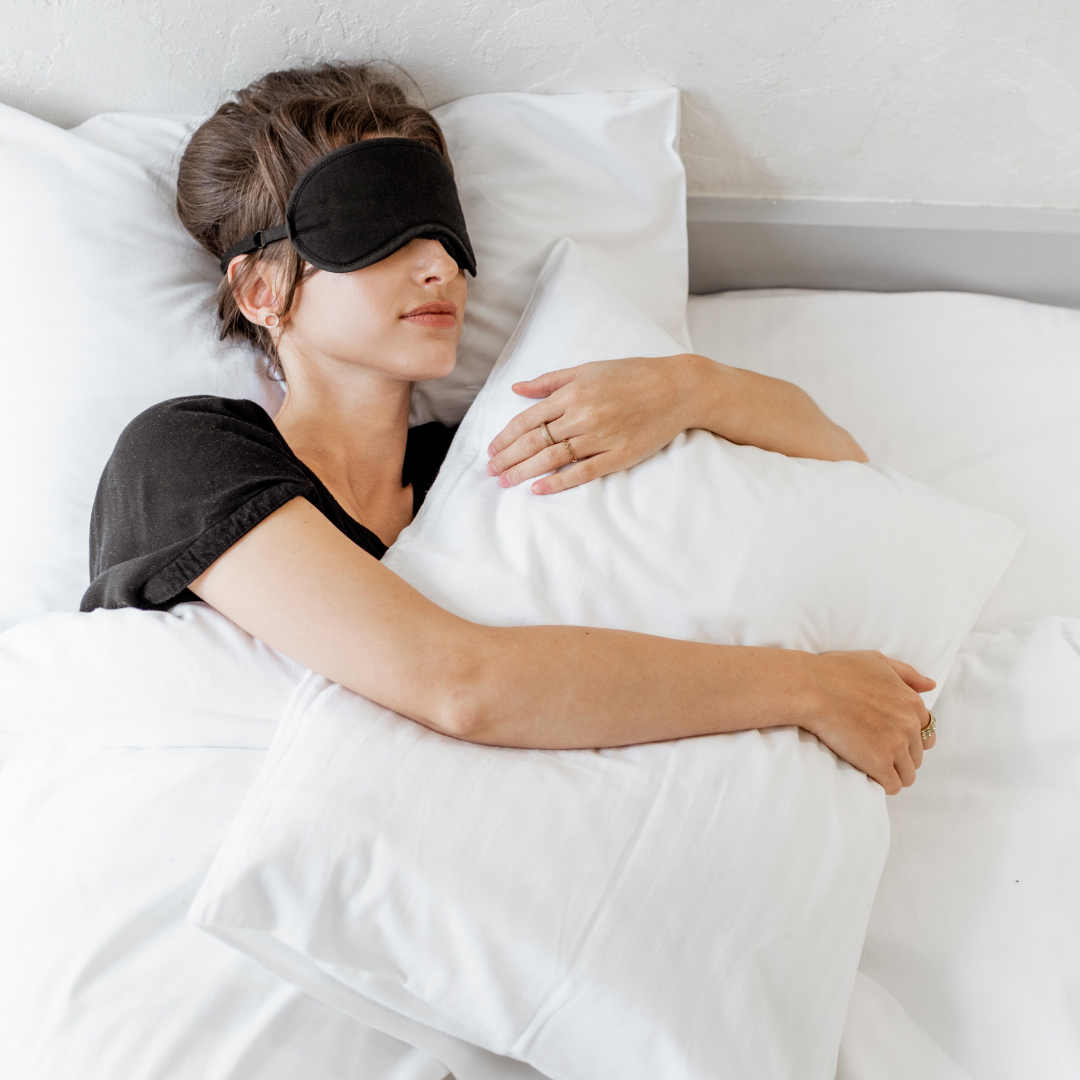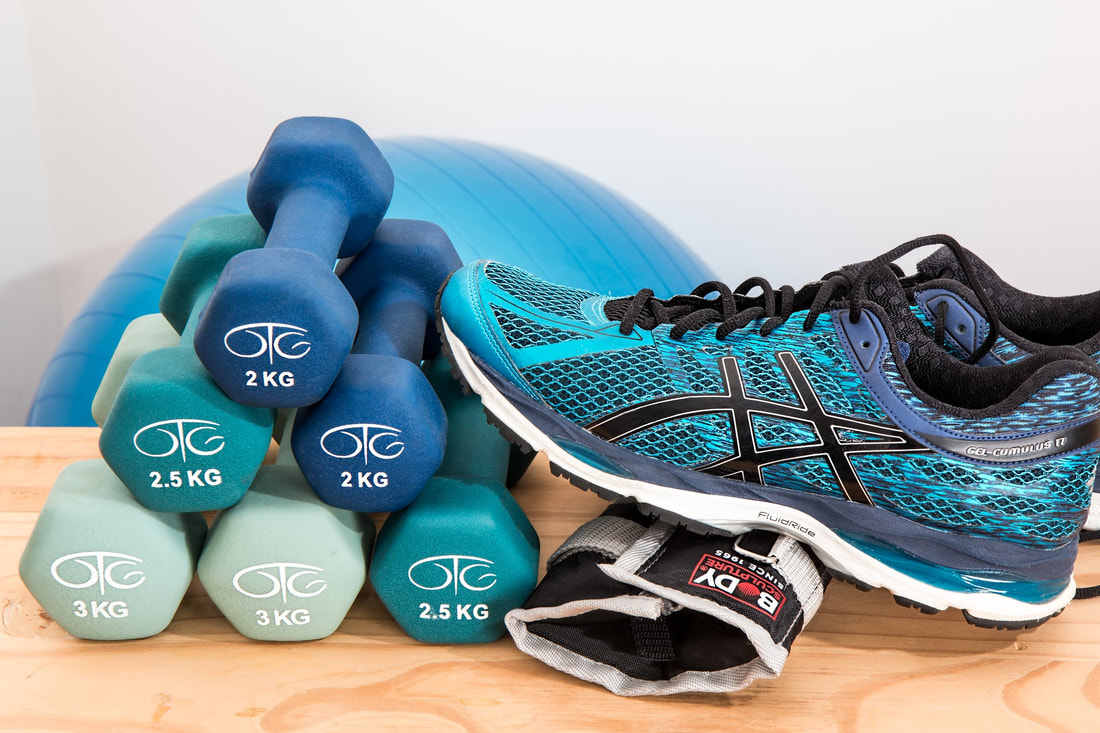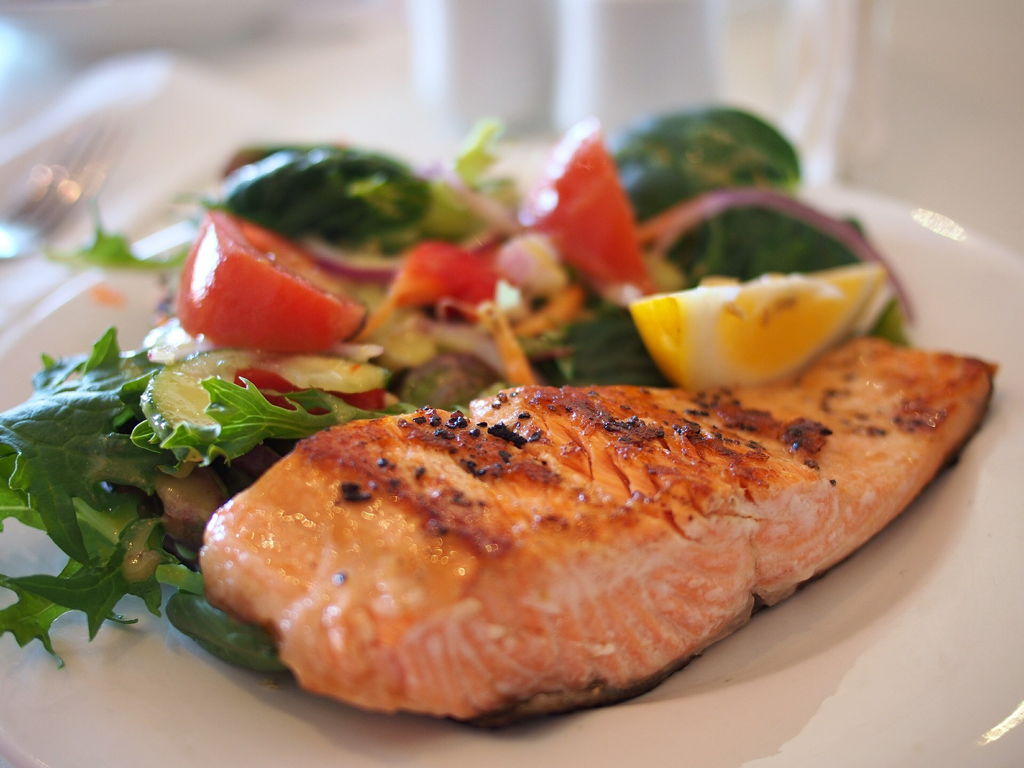|
Sleep is a vital component of our overall well-being, and its impact extends beyond rest and rejuvenation. Did you know that improving your sleep quality can also have a profound effect on pain management? In this blog post, we will explore the fascinating relationship between sleep and pain, and how myotherapy can play a significant role in improving both. Discover how prioritising sleep and incorporating myotherapy techniques can help you find relief from chronic pain and enhance your overall quality of life. Research has shown a strong link between sleep disturbances and increased pain sensitivity. Lack of quality sleep can lower the pain threshold, intensify pain perception, and lead to a heightened state of discomfort. Conversely, improved sleep can alleviate pain and enhance the body's ability to manage pain perception effectively. During sleep, the body undergoes essential restorative processes, including tissue repair, hormone regulation, and pain modulation. Disruptions in these processes can contribute to the development and persistence of chronic pain conditions.
Myotherapists address musculoskeletal pain and dysfunction every day, and one of the most common factors we see in long term persisting pain patients is that their sleep is impacted by pain. For some patients its trouble getting to sleep and finding a comfortable position, for others its being woken up throughout the night due to pain and needing to reposition. Its also important to recognise that for a lot of people in pain, even if they fall asleep and stay asleep, they can struggle to get to the deeper, restful stages of sleep, and they can then have difficulty waking up and can experience heavy fatigue. When it comes to pain management and sleep improvement, myotherapy offers several valuable benefits: Pain Relief: Myotherapists employ various techniques such as deep tissue massage, trigger point therapy, and myofascial release to alleviate pain and tension in muscles and soft tissues. These treatments help reduce inflammation, release endorphins, and promote relaxation, leading to improved pain management and quality of sleep. Muscle Relaxation: Chronic pain often results in muscle tightness and stiffness, further disrupting sleep. Myotherapy techniques help release muscle tension and promote relaxation, enabling you to achieve a more comfortable and restful sleep. Relaxed muscles also facilitate better blood flow and nutrient delivery to the tissues, aiding in the healing process. Stress Reduction: Chronic pain can cause stress and anxiety, which can negatively impact sleep quality. Myotherapy incorporates relaxation techniques, such as gentle stretches and breathing exercises to reduce stress levels. By promoting a state of relaxation, myotherapy can help improve sleep and break the cycle of pain-stress-sleep disruption. Muscular Imbalances: Musculoskeletal imbalances can contribute to pain and discomfort, especially in people who have repetitive daily activities, or people who need to spend long periods of time in certain positions or postures. Myotherapists assess and correct muscular imbalances through targeted exercises and muscular retraining. By addressing these underlying issues, myotherapy helps improve alignment, relieve pain, and enhance sleep quality. Individualised Treatment Plans: Our myotherapists provide personalised treatment plans based on your specific needs. We consider factors such as your pain condition, sleep patterns, and lifestyle to develop a comprehensive approach. This tailored treatment approach ensures that your unique sleep and pain management goals are addressed, increasing the likelihood of successful outcomes. Sleep Routine Suggestions: We're experienced in helping create goals and plans for our patients, including setting up lifestyle routines that optimise your health. We can discuss your sleep routine with you, and consider factors like your mattress, pillow, which way you sleep, bedroom climate, factors like snoring (either your own snoring or a partners snoring!), relaxation techniques like using a sleep meditation or light background music, timing your sleep cycle to ensure you get enough rest. Improving your sleep quality can significantly enhance pain relief and contribute to an overall improved quality of life. The interplay between sleep and pain is complex, but by prioritising sleep and seeking the expertise of a myotherapist, you can unlock the healing potential of restorative sleep. Through techniques like pain relief, muscle relaxation, stress reduction, and muscular imbalance correction, myotherapy can play a crucial role in managing pain and optimising sleep. Remember, a restful night's sleep is not only a luxury but an essential component of pain management. Embrace the power of sleep and explore the benefits of myotherapy to find relief from chronic pain and regain control of your well-being. Don't be afraid to talk with our myotherapists about your sleep patterns and habits, we are here to help and we see people every week who find improvement in their pain through improving their sleep. Book a time with us or phone our clinic on 03 8204 0970. Guest blog by Kathryn Messenger, Naturopath at Whole Naturopathy. As a naturopath, I have studied both nutrition and herbal medicine for both treating and preventing disease. Naturopathic treatment varies depending on the how individual person experiences the disease, their health history and priorities. I love using herbal medicine as each formula of 4-6 herbs is different, depending on what each person needs. Food has a powerful effect on health, both positively and negatively, and I believe in a diet high in fruit and vegetables, together with protein and healthy fats; but low in highly refined foods (such as sugar and white flour products) and food additives (colours, flavours, and preservatives). The Mediterranean diet follow this basic outline and has been studied for its health benefits. If you find foods that you enjoy, a healthy diet is easily sustainable. Here are some conditions where a naturopathic treatment could work alongside myotherapy. Fibromyalgia Vitamin D is an important nutrient for those that suffer from fibromyalgia, and studies have shown a reduction in pain with supplementation, as well as an improvement to mental health issues such as anxiety and depression. A blood test for Vitamin D gives a reference range of 50-250 nmol/L, with the lower end of this range set in order to prevent osteoporosis (spontaneous spinal fractures). I use the Functional Medicine Ranges for blood tests which are the levels which have been found in optimal health. The optimal range for vitamin D is between 100-150nmol/L. Supplementing is recommended if your levels are below 100nmol/L, especially is the winter. In the summer, try to expose arms or legs to the sun for around 15 minutes a day, depending on your skin type. Try to achieve maximum exposure with no burning or redness afterwards. Stress contributes to a wide range of health issues including fibromyalia, and I love using a group of herbal medicines called ‘adaptogens’. These herbs make you like the ‘energiser bunny’, able to just keep going. In clinical trials on athletes, they could swim or run further or for longer when taking adaptogens. They help you adapt to stress, and therefore cope better with life stressors. Lifestyle changes to reduce stress are really important, and but are even more effective when combined with these herbs. Osteoarthritis Inflammation is a big part of any arthritis, and chronic inflammation contributes to many diseases characterised by pain. Omega 3 fatty acids have been shown to reduce inflammation, the best source of these is oily fish such as salmon or mackerel, but they are also found in nuts and seeds. In order to meet the daily requirements of omega 3, it is the recommendation is to eat fish twice a week, otherwise a fish oil supplement may be of benefit. Ginger is an anti-inflammatory herb and is particularly useful in those with poor circulation. This is seen if you have cold hands or feet, as ginger will increase the blood flow not only to warm you, but to bring oxygen and nutrients to the site of the arthritis. Turmeric is another anti-inflammatory herb and has been well researched for joint pain. You could try to increase it in your diet, although a supplement may be required for adequate intake. As well as increasing anti-inflammatory foods, it’s important to reduce pro-inflammatory foods. Refined sugar is the main culprit here, which increases inflammation and should be avoided. Whilst fruit which contains natural sugars, it is also high in fibre and antioxidants which has a positive effect on health. Sugar is devoid of other nutrients required to sustain and repair. In osteoarthritis, often the collagen of the joint is deteriorated. Vitamin C is important in the formation of collagen, and bone broth or a collagen powder can help to support the joint. Protein is such an important nutrient. It is required for growth and repair of all tissues, particularly muscles. Every meal should include a source of protein: meat, fish, eggs, dairy, nuts, seeds, beans, or legumes. So much can be done to improve your health naturally. If you’re unsure if a naturopath can help with your condition, please contact me to discuss you unique health issues. 0493 294 159
Suite 1, 24/1880 Ferntree Gully Rd Mountain Gate Shopping Centre Ferntree Gully, Victoria (Inside Providence Foods) [email protected] www.wholenaturopathy.com.au Do you love your heat pack? Me too!
There are plenty of reasons to keep your heat pack close by, and not just because we're entering winter! Heat treatment is great for muscle pain - its cheap, effective, and drug-free! Have you ever wondered why heating your sore muscles helps them so much? Some pains are categorised as ischaemic pain - that means that the tissue has a reduction of oxygen supply which is needed for normal cell activity. This tends to happen if we're in positions that compress or over stretch areas for a long time - like sitting at a desk for a few hours without getting up to move around. Heating an area increases the local blood flow, which means the blood vessels widen to get more fresh, oxygenated blood into your muscles and joints. What kind of pain should you use heat for? Many kinds of non-inflammatory pains will respond really nicely to heat, including things like cramping and spasming, stiffness and persistent tight or pulling muscles. Heat packs are easy to use for neck, shoulder, lower back or hip pain. If you have a lot of painful areas, a warm bath can be another great way of getting heat into your muscles - why not add some Epsom salts for the added magnesium benefits for sore, tight muscles! When should you not use heat? Avoid heating up any fresh injuries, especially if you have open wounds or if the injury has become infected. These kinds of injuries will be in the inflammatory stage of healing - you'll be able to tell because the area may be swollen, red and hot, and most likely it'll be much more sensitive than usual! Of course, you do need to be careful with heat packs or hot water bottles to make sure you don't burn yourself. Always wrap your heat pack or hot water bottle in a something like a pillow case, thin blanket or a towel so you don't have the hot surface directly on your skin. Using heat for too long might give you heat rash, so I usually suggest about 20 minutes at a time. Heat on its own is more for symptom relief than for resolving the underlying issue. If you have an injury or feel that you have a lot of long term tension built up in the muscles, book a treatment with your local Myotherapist. Remedial massage and myotherapy treatments are fantastic for releasing muscle tension and loosening up the tight spots. But unless you’re in the clinic a few times a week, there’s a good chance you’re still dealing with tight muscles in your daily life. There are heaps of contributing factors to tight muscles. How you move, how you sleep and how you spend your time can all affect your muscles. But one thing that you might not immediately think of is your diet. There are specific nutrients that your muscles need to contract (tighten) during movement and then relax during stretching or when you’re at rest. One well-known mineral is magnesium – also known as the relaxation mineral. So I asked my nutritionist bestie Sam Gemmell, aka The Rebel Nutritionist, for her top tips around using magnesium to keep your muscles in peak condition. My favourite fun fact from Sam is that dark chocolate is a great source of magnesium, and officially Nutritionist Approved! (Of course, in moderation!) Why do we need more magnesium?
Simply put, because we aren’t getting enough. Most people don’t consume enough through the diet. Magnesium is generally found in wholefoods, which we’re eating less of thanks to the increase in processed foods. But even for those who do eat enough, other factors such as chronic stress can deplete magnesium levels. If you have any kind of gut symptoms such as bloating, constipation or diarrhoea, you might not be able to absorb a good amount of magnesium from the foods you eat. There is also the issue of food containing less magnesium than previous years because the soils are being depleted of this vital nutrient. Magnesium is often called the relaxation mineral, but that’s too simple a term. It is used in over 300 different processes in the body. Healthy magnesium levels support energy production, muscle relaxation, blood sugar regulation, optimal blood pressure, bone strength and production of brain chemicals – just to name a few functions! Magnesium-rich foods to include The most sustainable way to boost your magnesium levels is to eat it! But the good news is that there are plenty of foods that contain magnesium. Some of the best options include:
As you can see, there is a variety of different options that cater to almost any dietary requirements. For best results, I’d recommend including at least one serve of magnesium-rich foods with every meal. This might mean: Oats, quinoa flakes or nut butter on wholemeal toast for breakfast Bean salad, fish and quinoa or sushi with wholegrain rice for lunch Adding a serve of green leafy vegetables to dinner (eg in your bolognaise sauce or soup) Other methods of boosting magnesium Sometimes, boosting your magnesium-rich foods is all you need to get results. But if you have very low magnesium levels, or have any kind of stress or condition depleting your levels, you might need to use food combined with other strategies. Supplements An easy way to get more magnesium in is with a supplement. That being said, please don’t just pick up a magnesium bottle from the supermarket! Magnesium supplements can vary from high-quality to very poor quality (which will give you nothing but diarrhoea!) The forms of magnesium found in most over-the-counter products can be irritating to the gut lining. These are best avoided for anyone with impaired digestion, absorption or any current gut symptoms. Your best bet is to see a practitioner who can recommend a high-quality practitioner brand. This also means you have some guidance around which supplement best suits your needs, as well as how much to take. You could even book a consultation with Sam at The Rebel Nutritionist, she would love to help you! Transdermal magnesium If you have issues with taking magnesium supplements or have very low levels, transdermal magnesium might be an alternative to try. The magnesium is absorbed through the skin. The exact amount of magnesium that makes it into your system isn’t well-researched, but some is better than none! You can use transdermal magnesium by using:
Muscles feeling tight? Been a while since your last myotherapy session? Click here to book a session. We know that it’s good to move our bodies on a daily basis. But when we get injured, it’s a good excuse to chuck in the towel for a few weeks– right? Wrong! Exercise or at least some type of movement is an important part of your recovery process. Although it might not be good to go for a run 2 hours after you break your ankle (ouch!), you do want to incorporate movement as your body heals. Let’s look at why exercise is so beneficial, and how to include it safely. What are some of the general benefits of exercise?
So first up – why do we want to exercise on a regular basis? I’m glad you asked! There are so many benefits to exercise for your physical, mental and emotional wellbeing. Some of them include:
Exercise, injury and pain The old-school approach to pain was all about rest and inactivity. But now we know that movement done correctly is one of the best things you can do for pain. When it comes to pain and injury, research has shown that exercise can:
But there are also the indirect benefits. For example, exercise improves sleep, which is when your body does its best healing. If you’re not sleeping well, it will take you longer to heal. But if you use exercise to improve your sleep, it can boost your recovery. How to exercise safely after an injury Convinced that you need to move that body? Let’s go about this with safety in mind. Here are a few tips to get you started. Start slow. After an injury, there are a lot of complex processes going on. So the last thing your body needs is for you to try and run a marathon while it’s still healing! Begin with gentle movements, and work your way up over a period of weeks until you’re back to your pre-injury levels. Use your non-painful joints. If you have an injured upper body, use your lower body for exercising. If you’ve got an injured lower body, do some upper body exercises. Endorphins don’t stay in the one place – they are systemic. So if you’re moving non-sore parts, the endorphins will make their way around your body to the sore parts to help relieve the pain. Get a proper rehab program prescribed. This might not be necessary if you’ve only rolled your ankle or stubbed your toe. But if you have had a significant injury or are in significant pain, it’s best to get help. As a myotherapist, I can prescribe rehab exercises that build your body’s strength back up, and adapt exercises that might be causing pain. Your exercises will change throughout our treatment plan - we start from light, easy exercises while the pain or injury is acute, and work up to more challenging exercises to rebuild strength when your body is ready for it. Ready to book in a session? Head to the booking page here. Nobody likes to feel sore and achey all the time. If you experience chronic pain, it can contribute to many other conditions and sabotage your mental health. But if you’re looking for natural ways to relieve pain, the first place to look to is your diet. My good friend and incredible Nutritionist, Sam Gemmell, has taken the time to write this guest blog to explain more. Oily fish
Fatty fish are a potent source of omega-3 fatty acids, which are naturally anti-inflammatory. Most studies that have been published focus on omega-3 supplements. But there are small studies that support consuming it as part of the diet as well. One showed that consuming fatty fish 4 times per week can reduce inflammatory compounds in the body. 3-4 serves of oily fish per week is a good number to aim for. If you prefer plant-based sources, include walnuts, chia seeds, flaxseeds and hemp seeds daily to reap the benefits. Olive oil Looking for a healthy source of fat to include in your diet? High quality olive oil has properties that may help to reduce joint-related symptoms. One animal study showed that extra-virgin olive oil reduced joint swelling, slowed the destruction of cartilage and reduced inflammation. But don’t worry – the benefits are for people as well! One study showed that people who consume olive oil are less likely to have rheumatoid arthritis. Olive oil can be drizzled over salads, or used to sauté ingredients. But it's not great for deep frying - deep frying isn't good for you anyway! Berries Berries are the best fruit ever, at least in my opinion! They are chock-full of nutrients including vitamins, minerals and antioxidants that can help to reduce inflammation naturally. One study showed that people who ate at least two servings of strawberries per week were 14% less likely to have elevated inflammatory markers. Researchers also suggest that blueberries and strawberries may offer protection against arthritis. Want to up your berry intake? Chuck them in your smoothies, porridge, salads or just straight into your mouth. Spices Spice things up in the kitchen! Pretty much any herb or spice will have antioxidant and anti-inflammatory properties. But if we’re going to play favourites, turmeric and ginger are bestfor sore joints and arthritis. There are many research studies that show supplementing with turmeric can be beneficial for arthritis. But adding it into your diet can still help as well! Turmeric is not well absorbed, so the best consume it is with a source of good fats and some black pepper. Research into turmeric and ginger has shown that both have anti-arthritic effects. How to use them? It’s simple – sprinkle your favourites spices everywhere! Turmeric and ginger can be added to sweet and savoury dishes. Tart cherry juice Tart cherries are packed full of antioxidants that can support your joint health. One study looking at osteoarthritis showed that consuming 475ml of tart cherry juice daily significantly reduced symptoms and inflammation. Tart cherry juice can also reduce inflammatory markers. But the benefits don't stop there. Tart cherry juice is also a natural source of melatonin, which is needed for deep, restful sleep. If you’re not getting quality sleep, your body can’t repair damage effectively, which can exacerbate pain. Ready to get into tart cherry juice? Make sure you choose an unsweetened variety. Otherwise, a lot of the benefits will be cancelled out by excess sugar. Green tea Don’t get me wrong, I love my coffee. But green tea is king when it comes to caffeine-containing beverages if you’re in pain. Green tea contains a potent antioxidant known as ECGC. ECGC has been shown to reduce inflammatory cytokines in research. And although trials are in the early stages, the research also suggests that it could be beneficial in reducing inflammation in osteoarthritis. I often recommend that coffee drinkers alternate between coffee and green tea – so if you drink 4 cups of coffee per day, try 2 cups of coffee and 2 cups of green tea. But if you're not big on caffeine, even one cup a day can offer health benefits. About Sam Sam is a nutritionist, health writer and wellness speaker based in Melbourne. She loves to spread knowledge about food as medicine, and is passionate about personalised nutrition. You can find out more on her website. |
Meet Our Team
We have a team of great practitioners available 7 days a week at our Rowville clinic. Archives
July 2024
Categories
All
|
Got a question about Myotherapy?
Contact Mel by phone, email or Facebook
|
Simple Wellness Myotherapy & Remedial Massage Clinic
Shop 12B 150 Kelletts Rd Rowville VIC 3178 |
Phone us on
03 8204 0970 |







 RSS Feed
RSS Feed